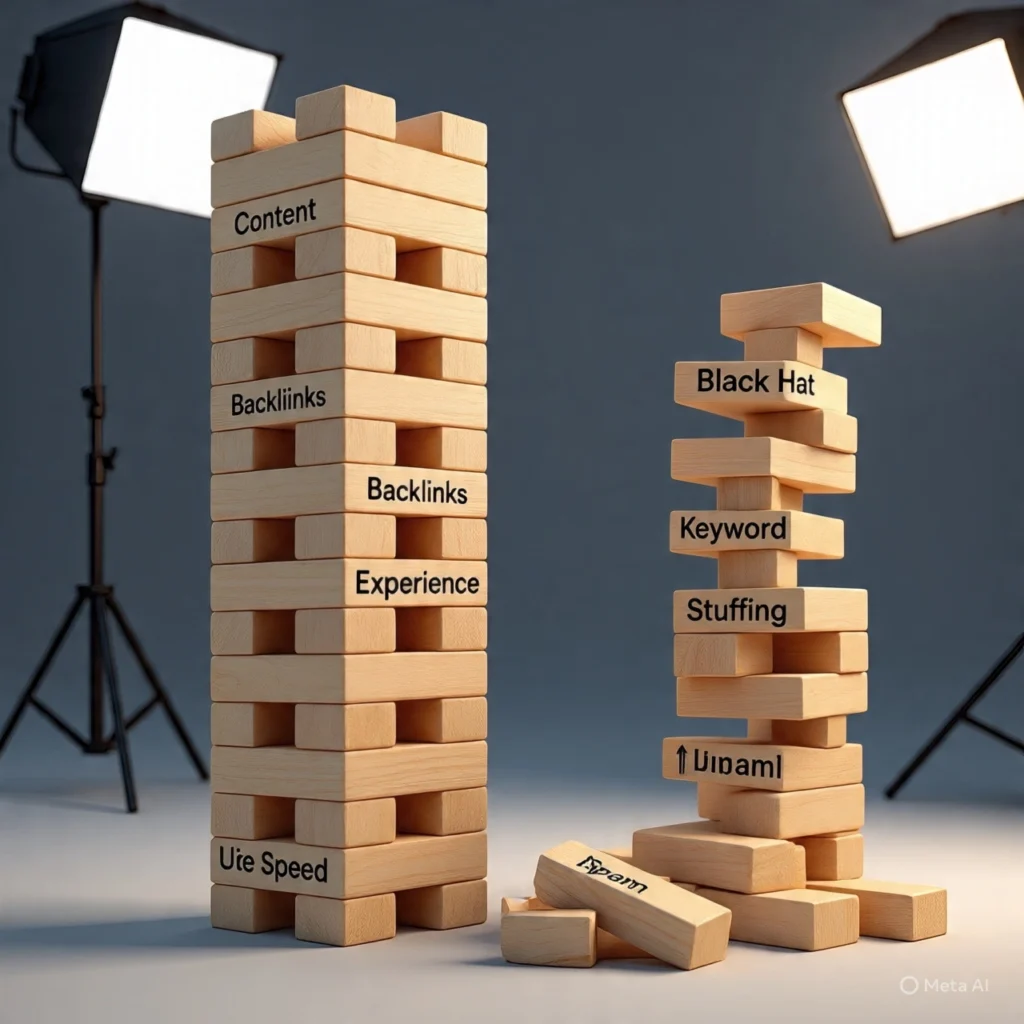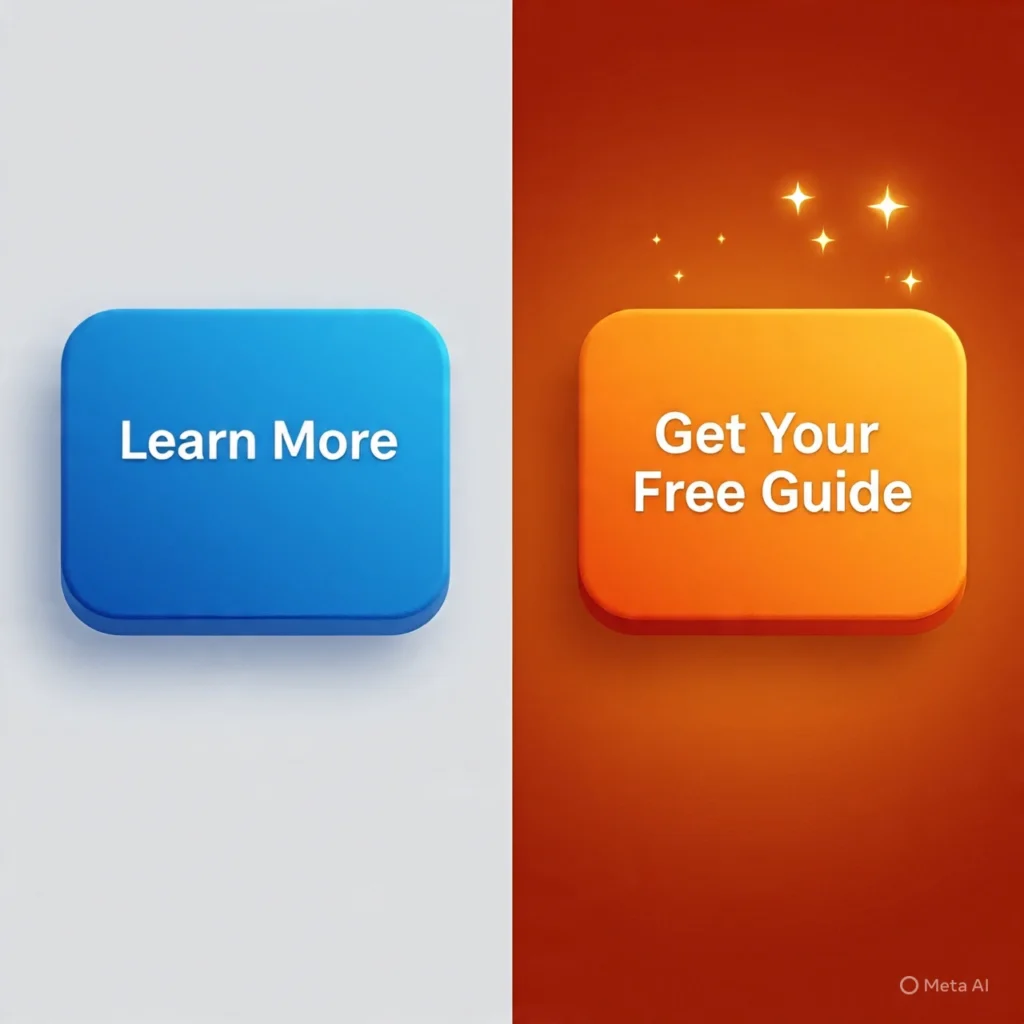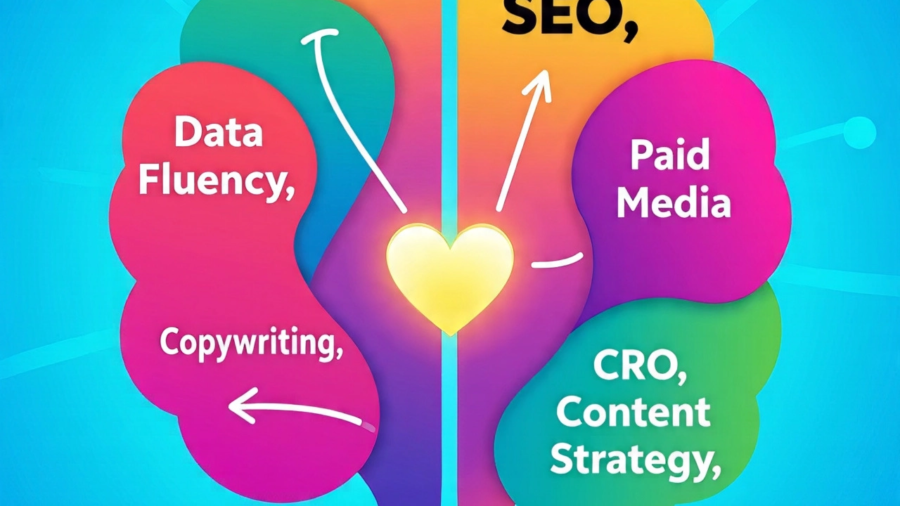The Best Digital Marketer Must Know This
If you picture a digital marketer as someone who just crafts catchy social media posts, it’s time for a serious update. That stereotype is as outdated as a dial-up modem. The digital landscape has evolved into a complex, multi-channel battlefield, and the marketers who thrive are no longer specialists in a single discipline. They are T-shaped professionals: deep experts in one or two areas, but with a broad, working knowledge across the entire spectrum.
They are the unicorns—the strategic, data-fluent, and creative powerhouses that drive real business growth. So, what does it truly take to earn that mythical status? Let’s break down the 12 essential skills that form the anatomy of a modern digital marketer.
1.Data Fluency: The Art of Listening to the Story in the Numbers.

Let’s be clear: data literacy is table stakes. True data fluency is what separates the amateurs from the pros. It’s not about just reading dashboards; it’s about interpreting the narrative the data is telling and making strategic decisions based on it.
. Moving Beyond Vanity Metrics: Anyone can report on likes, shares, and even website traffic. A unicorn marketer looks past these surface-level numbers to the metrics that directly impact the bottom line. They obsess over Customer Lifetime Value (LTV), Cost Per Acquisition (CPA), conversion rates, and marketing-attributed revenue. They understand that a 50% increase in followers means nothing if it doesn’t lead to a 10% increase in qualified leads or sales.
. Connecting Cross-Channel Dots: A Facebook ad might initiate a customer’s journey, an email might nurture them, and a Google Search ad might finally convert them. A fluent marketer doesn’t view these channels in isolation. They use analytics to connect this journey, understanding the attribution model and allocating budget to the channels that truly drive results, not just the last-click.
. Tool Proficiency: Mastery of tools is non-negotiable. This goes beyond Google Analytics 4 (GA4). It includes Google Tag Manager for flexible tracking, Google Looker Studio for building custom, actionable dashboards, and often a familiarity with CRM data to bridge the gap between marketing and sales.
2.Strategic SEO: The Foundation of Sustainable Growth:

earch Engine Optimization is not a dark art; it’s the bedrock of long-term, organic growth. While tactics change, the core principles remain. A modern marketer knows that SEO isn’t just the responsibility of a single specialist—it’s woven into every piece of content they create.
. Mastering Search Intent: The cornerstone of modern SEO. It’s not enough to rank for a keyword; you must satisfy the user’s intent behind that query. Are they looking to learn (“what is content marketing?”), to find a specific website (“Nike”), or to buy (“buy running shoes online”)? Creating a blog post for a commercial “buy” intent is a recipe for low conversion.
. Embracing E-E-A-T: Experience, Expertise, Authoritativeness, and Trustworthiness. Google’s guidelines are clear: they reward content that demonstrates these qualities. This means showcasing real-world experience, citing authoritative sources, and building a reputation that makes your site a trusted resource in your field.
. Understanding Technical Fundamentals: You don’t need to be a developer, but you must understand how technical health impacts rankings. This includes core web vitals (page speed, interactivity, visual stability), mobile-friendliness, site architecture, and crawlability. You should be able to identify a technical issue and communicate it clearly to a developer.
3.Paid Media Mastery: The Engine for Scalable Acquisition

Organic reach is a supplement, not a strategy. Knowing how to strategically invest money to amplify your message and target your ideal customer with precision is a critical skill.
. Funnel-Based Campaign Architecture: A unicorn doesn’t just run “awareness” campaigns. They build sophisticated campaigns that mirror the customer journey: top-of-funnel (TOFU) prospecting campaigns, middle-of-funnel (MOFU) retargeting and consideration ads, and bottom-of-funnel (BOFU) conversion-focused efforts.
. Platform-Specific Creativity: What works on LinkedIn will fail on TikTok. A deep understanding of each platform’s unique audience, ad formats, and creative best practices is crucial. This involves writing platform-native copy and creating visuals that feel native to the user’s feed.
. Rigorous ROI Analysis: The ability to track every dollar spent back to its return is paramount. This means setting up conversion tracking correctly, understanding your target CPA and LTV, and having the discipline to pause underperforming campaigns and scale winners.
4.The Power of Persuasive Copy

In a world of infinite scroll, your words must grip, engage, and persuade within seconds. Copywriting is not just for landing pages; it’s for every single touchpoint: email subject lines, social media captions, video scripts, and button text.
. The AIDA Framework: Attention, Interest, Desire, Action. A skilled marketer structures their copy to seamlessly guide the reader through this psychological journey.
. UX Writing: The microcopy on a website—the button that says “Get Your Free Guide” instead of “Submit”—can dramatically impact conversion rates. Understanding how words affect user behavior and clarity is a subtle but powerful skill.
. Developing a Consistent Brand Voice: Your copy must be instantly recognizable, whether it’s a 280-character tweet or a 2000-word blog post. It builds trust and fosters a connection with your audience.
5. Email & Automation: Owning Your Audience
Your email list is your most valuable digital asset—a piece of land you own in a world of rented social media space. Mastering it is non-negotiable.
· Strategic Segmentation: Blasting the same message to your entire list is a cardinal sin. Unicorn marketers segment their lists based on demographics, past purchase behavior, website activity, and engagement levels, allowing for hyper-personalized communication.
· Behavior-Triggered Automation: This is where the magic happens. Building automated email sequences that respond to user behavior—like a welcome series for new subscribers, an abandoned cart flow, or a re-engagement campaign for lapsed users—creates a seamless, 1:1 customer experience at scale.
· Personalization Beyond “Hi [First Name]”: True personalization involves using data to recommend relevant products, send content based on past downloads, or acknowledge a customer’s anniversary with your brand.
6. Visual Storytelling & Design Sensibility

Humans are visual creatures. You don’t need to be a graphic designer, but you must possess a strong visual sensibility and understand the principles of design.
· Command of Core Principles: A working knowledge of layout, color theory, hierarchy, and typography allows you to create (or effectively art-direct) assets that are not only beautiful but also communicate clearly and drive action.
· Video-First Mindset: Short-form video is the dominant form of content consumption. Being comfortable planning, scripting, and producing engaging video content for platforms like TikTok, Reels, and YouTube Shorts is a massive advantage.
· Asset Curation & Creation: Knowing how to source high-quality stock assets, use design tools like Canva or Adobe Express, and collaborate effectively with professional designers is key to maintaining a consistent and polished brand identity.
7. Conversion Rate Optimization (CRO): The Science of the Click

Your job isn’t done when you get the traffic; it’s to convert that traffic. CRO is the systematic process of increasing the percentage of visitors who take a desired action.
· Hypothesis-Driven A/B Testing: This is more than just guessing. It’s about forming a data-backed hypothesis (e.g., “Changing our CTA button from green to red will increase clicks because it creates a stronger visual contrast”) and running a controlled experiment to prove or disprove it.
· User Journey Mapping: By visualizing the entire path a user takes on your site, you can identify friction points, confusing navigation, and missed opportunities that are killing your conversions.
· Leveraging Psychological Principles: Understanding and ethically applying principles like social proof (testimonials, reviews), scarcity (limited-time offers), and urgency (countdown timers) can significantly boost conversion rates.
8.Content Strategy: The Engine of Education & Trust

Content is more than just blog posts. It’s the entire body of information and experiences you create to attract, engage, and retain an audience.
· The Pillar-Cluster Model: Organizing your content into comprehensive “pillar” pages that cover a broad topic and supporting “cluster” pages that target specific long-tail keywords. This creates a silo of authority that Google loves.
· Content for Every Stage: Creating assets tailored to each stage of the buyer’s journey: educational blogs and videos for awareness, case studies and webinars for consideration, and free trials and demos for the decision stage.
· Repurposing with Purpose: A single webinar can be turned into a YouTube video, a series of social media clips, a podcast episode, a blog summary, and an infographic. Maximizing the ROI of every piece of content you create is a key strategic skill.
9.Community Building: Fostering Loyalty & Advocacy

The most powerful marketing is word-of-mouth. Building a community around your brand transforms customers into loyal advocates.
· Choosing the Right Platform: This could be a branded Facebook Group, a Discord server, a LinkedIn community, or even a dedicated forum on your website. The platform should fit your audience’s natural habitat.
· Facilitation, Not Just Broadcasting: A community manager doesn’t just post and leave. They spark conversations, ask questions, celebrate member wins, and foster a sense of belonging and shared identity.
· Listening & Innovating: A vibrant community is a direct line to your most passionate users. It’s an incredible source of feedback, product ideas, and user-generated content.
10.Agility & A Hunger for Learning
The digital marketing world changes at a dizzying pace. Algorithms update, new platforms emerge, and consumer behaviors shift overnight.
· A Growth Mindset: The belief that your abilities can be developed through dedication and hard work. You must be a perpetual student of the game.
· Experimental Courage: Being willing to test new platforms and tactics before they become mainstream. The first movers on TikTok and Clubhouse reaped massive rewards.
· Curiosity as a Core Value: The best marketers are naturally curious. They reverse-engineer competitor campaigns, attend webinars, listen to podcasts, and constantly ask “why” and “what if.”
11.Business Acumen: Speaking the Language of ROI

his is arguably the most important skill for career advancement. You must understand how marketing contributes to the overall business objectives.
· Connecting Efforts to Outcomes: You don’t just report on “leads;” you report on “marketing-qualified leads that resulted in $X of sales pipeline.” You frame your work in terms of revenue, profit, and market share.
· Budget Management & Forecasting: The ability to manage a marketing budget, forecast results, and articulate the financial rationale behind your strategic choices makes you a strategic partner, not just a cost center.
12.Empathetic Customer Centricity: The Human Core

Beneath all the data, technology, and strategy, marketing is about connecting with people. Without genuine empathy, all your efforts will feel hollow and transactional.
· Developing Detailed Buyer Personas: Going beyond demographics to understand your ideal customer’s pain points, goals, fears, and daily life. This makes your messaging resonate on a human level.
· Active Listening: Regularly reading comments, talking to the sales and customer service teams, and conducting user surveys to stay plugged into the voice of the customer.
The Bottom Line: You Don’t Have to Be a Mythical Beast
Becoming a “unicorn” isn’t about being a flawless expert in all twelve areas on day one. It’s about cultivating a T-shaped skillset: developing deep, expert-level knowledge in 2-3 core areas (e.g., SEO and Content, or Paid Media and CRO) while building a solid, working proficiency across the rest.
Start by conducting an honest audit of your own skills. Identify your strengths and your most significant gaps. Then, create a learning plan. Take a course on CRO. Volunteer to manage a small paid social budget. Dive deep into your company’s GA4 data.
The journey to becoming a modern digital marketer is a marathon of continuous learning and adaptation. But by focusing on these twelve essential skills, you’re not just chasing a trend—you’re building a resilient, future-proof career that will be invaluable to any organization. Now go forth and build your horn.



